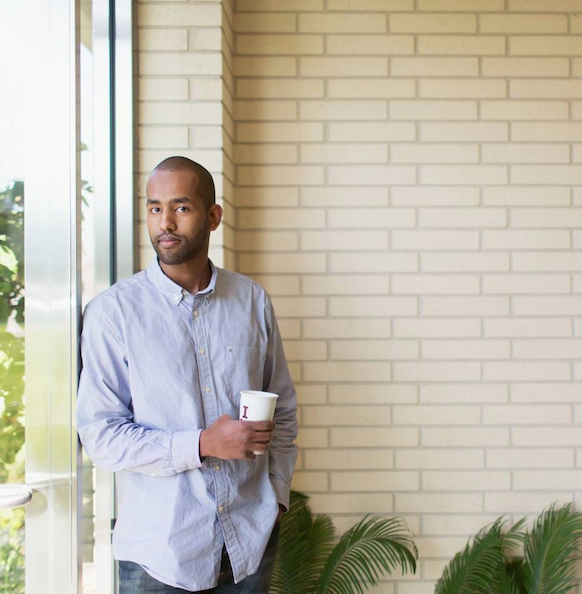News & Articles
Color Q&A: Abdi Khalif, automation engineer – Color
Michael Krantz

Every week (or so) we’re going to chat with someone who’s doing something interesting here at Color. Congratulations, Abdi — you’re the first Color Q&A.
Let’s start with your story. Where did you grow up? What interested you as a child?
I grew up in Burnaby, British Columbia. I was a big gamer growing up. I’d spend a lot of time trying to overclock the family computer so it could play the latest games.
How did you get into robotics/computer science?
I never studied robotics or computer science; since high school, I always liked biology. When my grade 12 biology teacher complimented my agar plating technique I knew I had the makings of a lab rat. I majored in biotechnology at UBC but I always had an interest in computers. I would build my own gaming computers from spare parts. I actually ran my own computer repair business when I was in high school but stopped when I realized most people just wanted help wiping their (most likely) stolen computers.
What were your early jobs? What did you learn from them?
My first job after University was with a startup that was developing a liquid biopsy test for early stage cancer. I learned how things are done in a clinical lab — validations, SOPs, state regulations. And as an early employee there, I learned the startup grind and found that I really enjoyed it. I moved down from their R&D headquarters in Vancouver, BC to help start the clinical lab in Mountain View. I was with them for about a year.
How did you make your way to Color?
I started with Color in the fall of 2014 when the company decided to build a lab. They were in stealth mode at the time but some of the Color team came down to Mountain View looking for lab space and equipment. I was sold on the mission and everyone on the team was very driven to make a big impact on population health. I started in October, 2014 just as Color secured a lease on lab space in Burlingame.
What’s your role today? What do you do on an average day?
I work as a Robotics Engineer in Color’s R&D team, developing the automated laboratory procedures that are used in our clinical lab. This involves programming liquid handling robots to perform processes such as DNA extraction, library preparation and target capture. On an average day I’m writing new scripts for the robots or iterating on existing ones, designing custom hardware using CAD software, or fine-tuning the robots to make sure they’re in calibration.
How has our company changed since you started?
More teams, more coffee, more food! When I started we were stocking our kitchens with groceries and making our own lunches. We now have catered lunches that are very convenient and tasty, but it was a nice bonding experience to make lunches together. We no longer go around the room and hear about what everyone in the company is working on that day, but we’ve managed to maintain really good communication and transparency for a company of 150 people.
What do you like best about your job? About Color?
I enjoy being able to come up with creative ideas that make our lab faster and more efficient. Whether it’s using 3D printing to make a custom part or using software to eliminate manual file handling, we’re always thinking of ways build scalable lab processes without sacrificing quality. In order to make a big impact on population, we need to take genetic sequencing to a scale that’s never been attempted before. Off-the-shelf robotics or chemistry won’t cut it.
And I really enjoy being part of a team that’s driven by a meaningful mission. Being around people who really care about helping others live healthy lives is inspiring and keeps you motivated.
What challenges will you be tackling next?
A big challenge that’s in the works for the R&D team is a building a more autonomous lab that can carry out “lights-out” processes. There are some key aspects that need to be in place in order to achieve this. At the core is an efficient scheduling framework so that hand-offs between robots happen seamlessly with zero down-time. There needs to be a set of fail-safe procedures for handling common errors such as liquid-level detection failures and more serious ones like hardware crashes. Inventory levels and temperature sensitive storage capacities need to be continuously monitored and used to plan work upfront to limit downstream complications.
Tell the truth: do we need to be worried about a Killer Robot Army rising up and making war on humanity?
Judging by how some of these folks treat their robots, we should be terrified! Jokes aside, machines can be designed and programmed to do pretty much anything. Using machine learning to develop emotionally intelligent AI is a topic of serious discussion and one that has the potential to make human-robot interactions more personable…and perhaps keep killer robots at bay.


